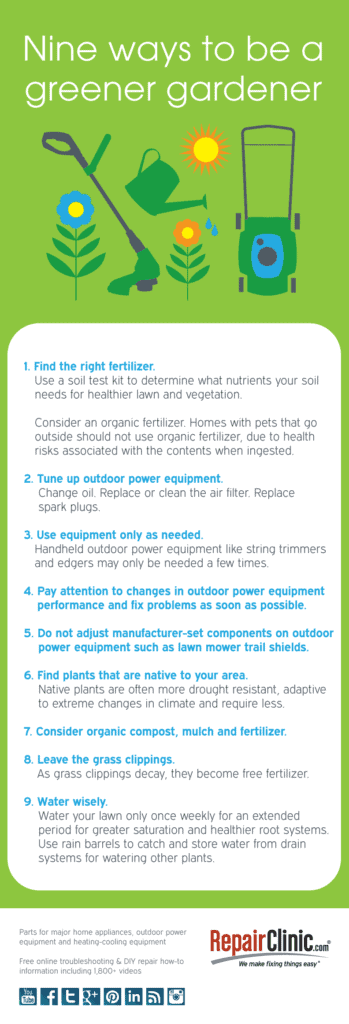The best eco-friendly lawn care practices start with understanding your soil, maintaining your equipment, and using natural resources wisely. Healthy lawns don’t rely on constant watering or harsh chemicals—they thrive on balanced nutrients, proper mowing habits, and smart use of compost and native plants. By learning how to tune up your tools, avoid overuse, leave grass clippings in place, and choose the right fertilizers, you can create a sustainable lawn that looks great while protecting your local environment. This guide explains each step, from soil testing and organic care to efficient watering strategies, so you can keep your yard green and resilient year after year.
1. Get to know your soil and what it needs.
Use a soil test kit (available at home improvement stores) to determine what nutrients your soil needs. That information, coupled with consideration of other yard conditions, will help you determine the appropriate fertilizer formula for a healthier yard.
2.Tune up outdoor power equipment.
Clean air filters and fresh oil and fuel contributes to the efficient operation of small engines.Regular maintenance improves efficiency, reduces emissions and extends the life of equipment.
Related posts
How to tune-up your lawn mower
Find the tune-up kit specifically designed for your engine
3. Use equipment only as needed.
Handheld outdoor power equipment like string trimmers and edgers may only be needed a few times per month.
4. Pay attention to changes in outdoor power equipment performance and fix problems as soon as possible.
Regularly inspect lawn mowers and other outdoor power equipment for damage and troubleshoot when problems first start to extend the lives of your equipment.
5. Don’t mess with manufacturer-set components.
For safety purposes, trail shields and other manufacturer-set components on outdoor power equipment should not be adjusted.
6. Find plants that are native to your area.
Vegetation that originates from your region is more likely to be drought resistant, adaptive to extreme changes in climate and requires less watering.
7. Consider organic compost, mulch and fertilizer.
The Environmental Protection Agency provides tips on easy do-it-yourself compost making.
Organic fertilizer warning: Have pets? Be careful. Organic fertilizer formulas that use ground bone meal, blood meal and fish meal are nitrogen rich and often touted as a more environmentally-responsible alternative to other formulas. However, unfortunately, the taste and smell makes it an appetizing treat for some pets. Sadly, when ingested, this type of fertilizer can cause significant, even fatal, health complications for pets. If you have a pet or if your neighbors’ pets spend time in your yard, I recommend avoiding this type.
8. Leave the grass clippings.
As grass clippings decay, they become free fertilizer.
If you’re cutting your lawn regularly, the clippings shouldn’t be so great that they mat or cause thatch (a mix of dead and living grass). If you cut your lawn after an extended period and find the amount of clippings is so substantial that it could cause matting, use a basic take to move the clippings to the middle of the yard and add the clippings to your compost pile.
9. Easy on the watering.
For most parts of the U.S. and Canada, lawns thrive best when watered once weekly for an extended period. This enables greater saturation. Conversely, frequent watering for shorter periods hinders grass growth by keeping the root system close to the surface. This makes lawns more susceptible to disease and pest infestation. It is best to water morning or evening hours to limit water loss through evaporation. Rain barrels are growing in popularity. These barrels catch and store water from drain systems; this water can then be used for watering plants, trees and vegetation.
What else would you add to this list?
Let us know in the comments below.
Related info
Lawn mower repair help
Seven habits of highly-effective lawn caregivers
The secret to making your lawn mower run like new
